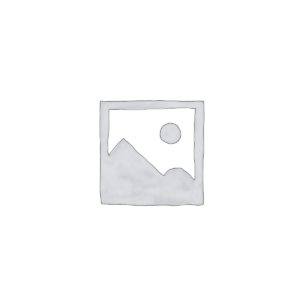Have you ever felt stuck, like your thoughts were holding you back? Maybe you’ve heard about CBT, but you’re not quite sure what it’s all about. Or maybe you think therapy is only for “serious” problems. This Ultimate Guide to CBT will address those things.
In this article, we’re going to break down the mystery of Cognitive Behavioral Therapy, or CBT. It’s not some complicated thing that only therapists understand. We’ll explore how CBT can help you challenge negative thoughts and live a more fulfilling life.
Table of Contents:
- What Is CBT?
- How Does CBT Work?
- What Can CBT Help With?
- Benefits of CBT
- Techniques Used in CBT
- Finding a CBT Therapist
- Getting the Most Out of CBT
- CBT Worksheets and Tools
- Self-Help CBT Resources
- FAQs About CBT
- Conclusion
What Is CBT?
Cognitive Behavioral Therapy is a type of psychotherapy based on the idea that our thoughts, feelings, and behaviors are all connected. Our thinking, feeling, and behaving patterns significantly impact our experiences, both good and bad. Since these patterns impact our experiences, altering them can change our experiences (Martin, 2016).
CBT Focuses on the Present
Unlike some therapies that dig into your childhood, CBT is action-oriented. CBT focuses on present-day challenges. It helps you learn practical skills to manage and change those unhelpful patterns that might be causing you distress.
A Collaborative Approach
CBT is about working together with a therapist as a team. It’s not about the therapist telling you what to do. You and the therapist work together.
You will identify negative thoughts and develop healthier coping skills. It’s about giving you the power to help yourself.
How Does CBT Work?
CBT is based on the understanding that it’s often our thoughts about situations, not the situations themselves, that cause distress. For example, two people can experience the same event but react completely differently based on their thoughts and beliefs.
The way we interpret an event plays a big role in how it affects us. That’s where CBT comes in. CBT provides a structured framework for identifying and changing negative thinking patterns.
The CBT Model
Imagine a triangle where your thoughts, feelings, and behaviors are each a point.
- Thoughts: What we think affects how we feel.
- Feelings: How we feel influences how we act.
- Behaviors: Our actions often reinforce our thoughts.
CBT helps you break free from these cycles.
What Can CBT Help With?
CBT is used for a wide range of mental health concerns. Have you experienced any of the issues below?
- Anxiety Disorders
- Depression
- Eating Disorders
- PTSD
- Relationship Issues
- Sleep Problems
- Mental Health Assessment
- The impact of mental health on physical health
These are just some examples of what CBT can address.
Benefits of CBT
CBT offers a wide array of benefits, setting it apart from many other therapeutic approaches:
- It’s Solution-Focused: CBT helps individuals identify problems and develop strategies to overcome them.
- It’s Time-Limited: Unlike other therapy that can go on indefinitely, CBT is usually short-term. Treatment lasts a few weeks to several months.
- It’s Empowering: CBT arms individuals with coping mechanisms to use long after therapy ends.
Techniques Used in CBT
A variety of techniques are used in CBT. This Ultimate Guide to CBT wouldn’t be complete if it didn’t talk about a few of these:
1. Cognitive Restructuring
This technique involves identifying and challenging negative thought patterns. Imagine you’re constantly thinking, “I’m a failure.” Cognitive restructuring would help you examine this thought.
Ask yourself: “What’s the evidence? What’s a more balanced perspective?” Cognitive restructuring allows you to challenge unhelpful thoughts and reframe them more positively.
This form of CBT is often referred to as cognitive therapy. The ideas of cognitive therapy began in the 1970s and 80s. After two major studies, it was confirmed that CBT worked better than medication for depression. In the 1990s, the two Doctors Beck developed the Beck Institute for Cognitive Behavior Therapy to support and grow these efforts.
2. Behavioral Experiments
Have you ever avoided a situation because you feared the worst? Behavioral experiments allow you to test these fears in a controlled way.
For instance, if you fear public speaking, a behavioral experiment might involve giving a small presentation to a trusted friend. This process gradually helps you face those anxieties head-on and build confidence.
3. Mindfulness
You’ve probably heard about the power of mindfulness. Mindfulness involves paying attention to the present moment without judgment.
In CBT, mindfulness techniques such as meditation or deep breathing can help you manage overwhelming emotions. Mindfulness is the subject of a lot of new research in psychology.
Finding a CBT Therapist
If you think CBT might be a good fit for you, the next step is to find a therapist. Thankfully there are a variety of ways to connect with a CBT therapist:
- Ask Your Doctor: Your primary care physician can often give referrals.
- Contact Your Insurance Company: They can provide a list of in-network CBT providers.
- Use Online Directories: Websites, such as the CBT Register UK website, Psychology Today, or GoodTherapy, allow you to search for therapists.
When choosing a therapist, don’t hesitate to schedule a brief phone consultation first. This will allow you to determine if you feel comfortable and confident in their approach.
Getting the Most Out of CBT
Just like with any other type of therapy, your participation is crucial. You may need to put in some effort, just as you would with any other form of treatment:
- Be Open and Honest: Share your thoughts and feelings openly with your therapist to get the most from the sessions.
- Be Willing to Do the Work: CBT often includes homework assignments or activities, so consistency is vital.
- Be Patient and Kind to Yourself: Change takes time, so try not to get discouraged. Be patient with yourself as you navigate the journey of healing and growth.
CBT Worksheets and Tools
Many helpful tools can support your CBT journey. Worksheets, for example, can help guide your thoughts and actions. These include tools to uncover and adjust all-or-nothing thinking and other harmful behavior patterns. Worksheets can lead to valuable insights.
| CBT Worksheet | Description |
|---|---|
| Coping Styles Formulation Worksheet | This PDF instructs you or your client to first list any current perceived problems or difficulties, “The Problem.” |
| ABC Functional Analysis Worksheet | This tool can help you or your client find whether particular behaviors are adaptive and helpful in striving toward your goals, or destructive and self-defeating. |
| Case Formulation Worksheet | Download this helpful resource as a PDF here. |
| Extended Case Formulation Worksheet | Download the PDF to guide you or your client’s sessions. |
| Dysfunctional Thought Record | Use this worksheet as a PDF for you or a client. |
| Fact Checking Thoughts Worksheet | A useful CBT tool, the PDF can help you recognize your thoughts are not always accurate. |
| Cognitive Restructuring Worksheet | If you are experiencing thoughts based on falsehoods, this document can identify and defuse them. |
| Behavioral Experiments to Test Beliefs | Use these to help you or a client achieve therapeutic goals and live your best life. |
| Thought Record Worksheet | This is a great starting point for recognizing thought distortions. |
| Pleasant Activity Scheduling Worksheet | Introducing positivity is a cinch with this easy-to-use worksheet. |
| Imagery Based Exposure Worksheet | A key resource for imagery exposure. |
| Graded Exposure Worksheet | Download this PDF to practice graded exposure techniques. |
Many CBT workbooks exist to aid you as well:
- CBT Toolbox: A Workbook for Clients and Clinicians by Jeff Riggenbach (Amazon);
- The Cognitive Behavioral Workbook for Anxiety: A Step-By-Step Program by William J. Knaus and Jon Carlson (Amazon);
- The Cognitive Behavioral Workbook for Depression: A Step-by-Step Program by William J. Knaus and Albert Ellis (Amazon);
- Cognitive-Behavioral Therapy Skills Workbook by Barry Gregory (Amazon);
There are also platforms and programs to guide you. These programs offer resources such as downloadable meditations. The blended care platform Quenza allows you to access information and tools for things, such as psychoeducational activities on-the-go, via a device.
Self-Help CBT Resources
If you are looking for self-help CBT techniques, many credible sources exist, including published studies. A few techniques you may find beneficial include journaling, challenging cognitive distortions, cognitive restructuring, exposure and response prevention, and interoceptive exposure. In addition, consider nightmare exposure and rescripting. You could progressively play out fear-inducing situations to reduce anxiety. Other techniques include practicing progressive muscle relaxation techniques or employing relaxed breathing to create mental calmness. Research also shows that self-guided CBT can create positive and long-lasting changes in adults with ADHD.
FAQs About CBT
What is CBT?
CBT is a short-term, goal-oriented psychotherapy treatment. It takes a hands-on, practical approach to problem-solving. CBT’s goal is to change patterns of thinking or behavior that are behind people’s difficulties, and thus change the way they feel.
Is CBT Right for Me?
CBT has been proven to be an effective treatment for a number of different mental health concerns. These include anxiety disorders, depression, addiction, and maladaptive behaviors. CBT can also be helpful with other issues, such as chronic pain or insomnia.
What Should I Expect from a CBT Therapist?
You can expect to be an active participant in CBT treatment. Your therapist won’t just give you advice, but instead help you identify and challenge your negative thoughts and behaviors. It will be a collaborative effort that encourages self-discovery.
Conclusion
CBT offers a roadmap to understanding your thoughts, managing your feelings, and changing your behaviors in a positive direction. This Ultimate Guide to CBT doesn’t just stop at understanding what CBT is. This article shows how, with effort, dedication, and the right guidance, it can lead to profound and lasting changes in your life. Are you ready to start your CBT journey?


